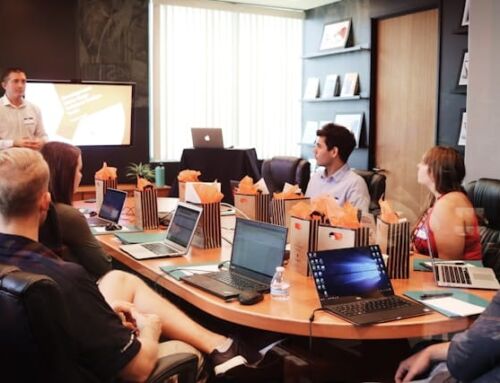Oftentimes, the terms leader and manager are synonymous with each other but there are definitely differences between the two. Do you know the difference between a leader and a manager? Do you know if you currently identify as a leader or a manager? Read on to find out more about the two and how you can make a difference in your workplace.
What is management?
Whether your title is executive, director, supervisor, or manager — you manage people. That responsibility is a heavy responsibility when you think about it. You hold people’s career potential in your hands and, of course, some of that potential rests on the head of the employee. You have the ability to assign tasks, dole out responsibilities, hold them accountable, give them resources to succeed, build them up or to tear them down. You have the ability to make their work life great or miserable.
What is leadership?
A leader is someone who people follow or want to follow without forcing them to do it. Leaders usually have a title, similar to what a manager has, but it isn’t a requirement. Mark Sanborn explains that you don’t need a title to be a leader and the difference between a little “l” and a big “L”. Leaders have the ability to get the most out of their employees while making them stronger in the process. Glenn Llopis says that, “leadership is about making employees feel safe, providing them a workplace environment to thrive, and giving them access to the right tools and resources to be successful.”
A leader recognizes employees
It is a universal fact that employees want to be recognized by their leaders. A recent study found that there is a correlation between job satisfaction and the frequency of positive recognition that employees receive from their managers. Employees that receive positive recognition on a daily basis reported a job satisfaction rate of 94 percent. How can you recognize employees? Try asking the right questions to them.
Leaders collaborate on decisions
A manager is great at making decisions and then assigning tasks without input from team members. However, employees want to feel like they have some influence with important decisions at work. A good leader recognizes these desires and ensures that employees and teams have the ability to help steer team direction and productivity.
Some have said that a leader is someone that you would follow into battle. To do that, you’d have to have the utmost respect and confidence in the person that was leading you. Just because you are a manager doesn’t mean that your employees necessarily trust you. Collaborating with employees on decisions and tasks can benefit a workplace in so many ways.
For instance, George Brandt shared his personal experience working at Coca-Cola. In his story he explains how the Doug Ivester, the CEO, would give his input into a situation but it would be up to Brandt to make the decision and report back to Ivester. This process empowered him and gave him input and let him make difficult decisions.
Making the transformation from manager to leader
So, how do you get from being a manager to a leader? As the great Vince Lombardi would say, “leaders are made, they are not born. They are made by hard effort, which is the price which all of us must pay to achieve any goal that is worthwhile.” You can learn leadership skills to help ease into the transition. The leadership development company CMOE detailed a list of 7 awesome strengths of a strategic leader. Some of these strengths include courage, challenging yourself, recognizing opportunities and many more. When you can hone your skills and make a conscious effort to become something better than a manager, the results you’ll achieve will be incredible.
It will take time to learn and implement new leadership skills if you’ve been lacking in some areas, but with time you can grow to become a trusted leader in your workplace. When employees and managers can respect each other and catch the vision for a company, managers disappear and leaders emerge with a full team of talent behind them.
Download the white paper and see how you can create an integrated, engaging employee experience using people analytics!
Image licensed from Depositphotos.com






A spot-on distinction between a manager and a leader. I just want to add, managers prefer to exert their authority in making sure that things are done the way they want it. But, leaders are partial to influencing their team, it is the shortest way in getting to the heart of their people. When you gain the respect of your people, they tend to perform better and will remain loyal. You transition from being manager to leader is when you start listening to their voices, when you lead through your heart and when you realize that your people perform better when they have trust in your leadership
Good differentiation on manager and leader and how one can change or skill himself/herself to use both to work for urself. As a lady manager I need to drive a way to young ladies and inspire them to became something am in that journey. Currently studying Bcom in human resource management.